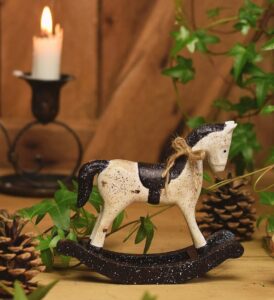Hi friends, and Happy Christmas to all who celebrate!
In my current WIP, the story includes a few scenes that take place at Pemberley over Christmas, which required me to do a bit of research on the festive season during the Regency period. So, I thought it might be fun to share the results of some of that research here today. And while I had initially planned to cover all of the season’s celebrations in one go, the post was getting a bit unwieldy, so I’m going to stick with Christmas Eve – Boxing Day here, and I’ll share another post on New Year’s and Twelfth Night next week. 🙂 I hope you enjoy!
 In Regency England, the “festive season” referred to the period encompassing Christmas Eve (December 24th) through Twelfth Night (January 5th or 6th). This period included a series of holidays and observances, each with its own customs and significance. The festive season was marked by social gatherings, feasting, and various traditions, many of which were tied to the church calendar.
In Regency England, the “festive season” referred to the period encompassing Christmas Eve (December 24th) through Twelfth Night (January 5th or 6th). This period included a series of holidays and observances, each with its own customs and significance. The festive season was marked by social gatherings, feasting, and various traditions, many of which were tied to the church calendar.
Christmas Eve and Christmas Day in Regency England were celebrated with a mix of religious observance, family gatherings, and festive customs. These traditions reflected the social norms of the time and varied by region and class.
The upper classes often traveled to country estates for the festive season, joining extended family or friends. Travel was less common for the middle and lower classes, as the logistics and costs could be prohibitive.
Those who traveled relied on carriages or coaches, braving wintry conditions and the limited infrastructure of the time. Hospitality was highly valued, and guests often stayed for extended periods, making travel worthwhile.
Christmas Eve was a time of spiritual preparation. Many attended church services, and devout households might read prayers or biblical passages at home.
 Regency homes did not have Christmas trees (these became popular in Victorian times) or excessive ornamentation. Decorations were simple, natural, and elegant, reflecting the taste of the period. Houses were typically adorned with natural greenery such as holly, ivy, yew, and mistletoe. These decorations were considered both festive and symbolic, with associations of good luck and protection against evil spirits. Mistletoe was especially popular for its folkloric connection to fertility and love, with the custom of kissing beneath it already in practice.
Regency homes did not have Christmas trees (these became popular in Victorian times) or excessive ornamentation. Decorations were simple, natural, and elegant, reflecting the taste of the period. Houses were typically adorned with natural greenery such as holly, ivy, yew, and mistletoe. These decorations were considered both festive and symbolic, with associations of good luck and protection against evil spirits. Mistletoe was especially popular for its folkloric connection to fertility and love, with the custom of kissing beneath it already in practice.
A large log (called a yule log) was also burned in the hearth as part of an old tradition. It was believed to bring good luck for the coming year.
On Christmas Eve, families gathered for a quiet evening together. Fireside storytelling, often featuring ghost stories or legends, was a popular pastime. Meanwhile, kitchens were busy with preparations for the Christmas Day feast. Plum puddings, mince pies, and other delicacies were prepared ahead of time. Groups of singers might visit homes, bringing cheer with traditional songs, although this was more common in rural areas.
Christmas Day generally began with morning church services marking the celebration of Christ’s birth. After church, families would gather for a grand meal and conviviality. This was a day for reconnecting with loved ones and extending hospitality to friends and neighbors.
 The Christmas feast was a highlight of the day, showcasing seasonal abundance and family traditions. Foods varied by household wealth and regional availability. Main dishes often included items such as roast goose, and wealthier households might serve beef, venison, or even turkey (though this was less common than goose). Side dishes included vegetables such as potatoes, carrots, and parsnips, and bread sauce and gravies to accompany meats. Common desserts were items like plum pudding (a rich, steamed dessert made with dried fruits and suet) and mince pies, filled with spiced fruit mixtures. Wassail (a spiced cider or ale punch) was traditional for toasting, and mulled wine and brandy were also popular.
The Christmas feast was a highlight of the day, showcasing seasonal abundance and family traditions. Foods varied by household wealth and regional availability. Main dishes often included items such as roast goose, and wealthier households might serve beef, venison, or even turkey (though this was less common than goose). Side dishes included vegetables such as potatoes, carrots, and parsnips, and bread sauce and gravies to accompany meats. Common desserts were items like plum pudding (a rich, steamed dessert made with dried fruits and suet) and mince pies, filled with spiced fruit mixtures. Wassail (a spiced cider or ale punch) was traditional for toasting, and mulled wine and brandy were also popular.
After the meal, games like charades, card games, or blind man’s buff might be played. Music and dancing were common, particularly in larger households with more space. Modest gifts might also be exchanged, especially among the wealthy. Typical gifts included handmade items, books, or tokens of affection.
Boxing Day, observed on December 26th and coinciding with St. Stephen’s Day, was an important part of the festive season in Regency England. It was primarily a day of charity, relaxation, and informal socializing, marked by customs that varied by class and location.
The name “Boxing Day” derives from the tradition of giving “Christmas boxes” — small gifts, money, or food — to servants, tradespeople, and the less fortunate. These boxes were tokens of appreciation and goodwill from employers and the wealthy. The day is also tied to St. Stephen, the first Christian martyr, who is associated with acts of charity.
On Boxing Day, the wealthy distributed gifts or money to their employees, tenants, and the local poor. This was often done in a formal manner, with recipients visiting the home to receive their “box.” However, some families sent donations to local churches or charities instead.
Servants, who worked hard on Christmas Day to serve the household were typically given Boxing Day off to celebrate with their own families. They were also often provided with leftover food from the Christmas feast to take home.
 Boxing Day was a day for informal visits, often involving smaller, more casual gatherings compared to the grand meals and balls of Christmas or Twelfth Night. This gave people a chance to reconnect with neighbors and exchange good wishes for the season. For country households, Boxing Day might also involve winter sports, sledding, or hunting parties, particularly among the gentry. Fox hunting was a popular pastime on this day, with estates hosting organized hunts for their social circles.
Boxing Day was a day for informal visits, often involving smaller, more casual gatherings compared to the grand meals and balls of Christmas or Twelfth Night. This gave people a chance to reconnect with neighbors and exchange good wishes for the season. For country households, Boxing Day might also involve winter sports, sledding, or hunting parties, particularly among the gentry. Fox hunting was a popular pastime on this day, with estates hosting organized hunts for their social circles.
After the busyness of Christmas Day, Boxing Day was a more relaxed affair, allowing families to enjoy quiet time together or recover from the previous day’s indulgences. Meals were simpler than the Christmas Day feast but still festive, and leftovers often formed the basis of the day’s meals.
Boxing Day was also a practical day for balancing the demands of the household with the needs of servants and the community. It provided a moment of respite and a chance to extend the spirit of goodwill to those beyond the immediate family.
Thanks so much for reading! I hope you enjoyed that little look back at Christmas in the Regency period. Wishing you and your loved ones a very happy holiday season!
Until next time!
JA

3 comments
Merry Christmas Jennifer! Thank you for sharing. I was born in England, and when I was a child, my mom would wait until Christmas Eve to decorate the house and put up the tree and then remove it all on Jan. 5/6th. I love the origins of Boxing Day. I look forward to reading about New Years and 12th Night. Wishing you and yours a very Merry Christmas.
Nice info.
Merry Christmas 🎄 🌲
Again, thanks for providing some context and history to these holiday celebrations , Jennifer! Happy New Year to you m!